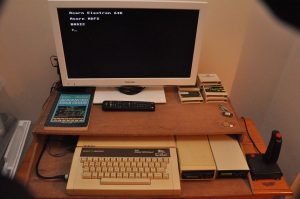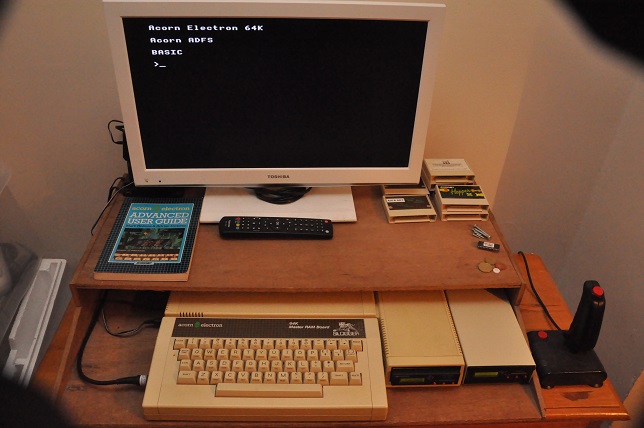
In a few weeks time, I am due to do a talk about my business at a local business networking group. I thought that it would be fun to take along my very first computer from 1982, oh, wait just one minute, how about using it to do a presentation? What? Do a presentation on a 36 year old binary dinosaur? Is that even possible? Am I mad? Absolutely, and I think it would not only be fun, but, it will show off my programming skills if I can pull this mamouth task off..! So, what is the machine you ask? It is an Acorn Electron from 1982, albeit with some extra tricked out bells and whistles, but, it is the actual machine I first had in 1982 courtesy of Eddie Smith.
No Powerpoint
You see, this computer pre-dates all versions of Microsoft Office, and so there is no Powerpoint in which to simply rely on to create the slides. So, I will have to be creative with some old school programming and write some software to do the same job. I decided to keep things simple, and write the code in BBC Basic that the Electron comes with, although I could have done it in 6502 assembly language as I can program this machine easily in both, but, to keep it simple, BBC Basic.
With the Advanced User Guide out, and after two nights writing the code, I have 7 slides to show my audience. As the graphics capabilities are so limited, and I needed maximum font readability, I decided to go with a Mode 1 screen resolution and only 4 colours. Now our company logo is made up of 3 colours, blue, cyan and white text. So, the background would have to be either black or white. In keeping with the old school theme, I decided on a black background. So, the colours are set, blue, cyan and white on a black background. This mean remapping red to be blue, and green to be cyan.
I decided on making some fancy jazzy bits. How about a moving line across the screen when changing screens? More business like than an alien gimmick, probably what my audience may expect from their “non-Powerpoint presentation”.
With 200+ lines of BBC Basic, I have the logo displayed on each slide, and my message I want to get across to my audiance.
Projection
So my next problem was, could I even connect it to a modern projector? Well, the answer lay in spotting at the hotel a composite video in on the rear of the projector. I would need to test this before going any further. So today, at the hotel, I did a test run, and I connected them up. I had a picture, but, unfortunately in black and white.
Acorn Electron Colour Composite Video Fix

After returning from the hotel with the computer, I stripped the Acorn Electron down and located link LNK4 and soldered a link across. I now have colour composite video..! Yippee, this is looking like this project is a go.
So now I am looking like I am all set for giving my talk in a few weeks time, and potentially gaining the geek of the year award. Hopefully, this will make them remember me, my company, our software solutions and help further in our company promotion…


